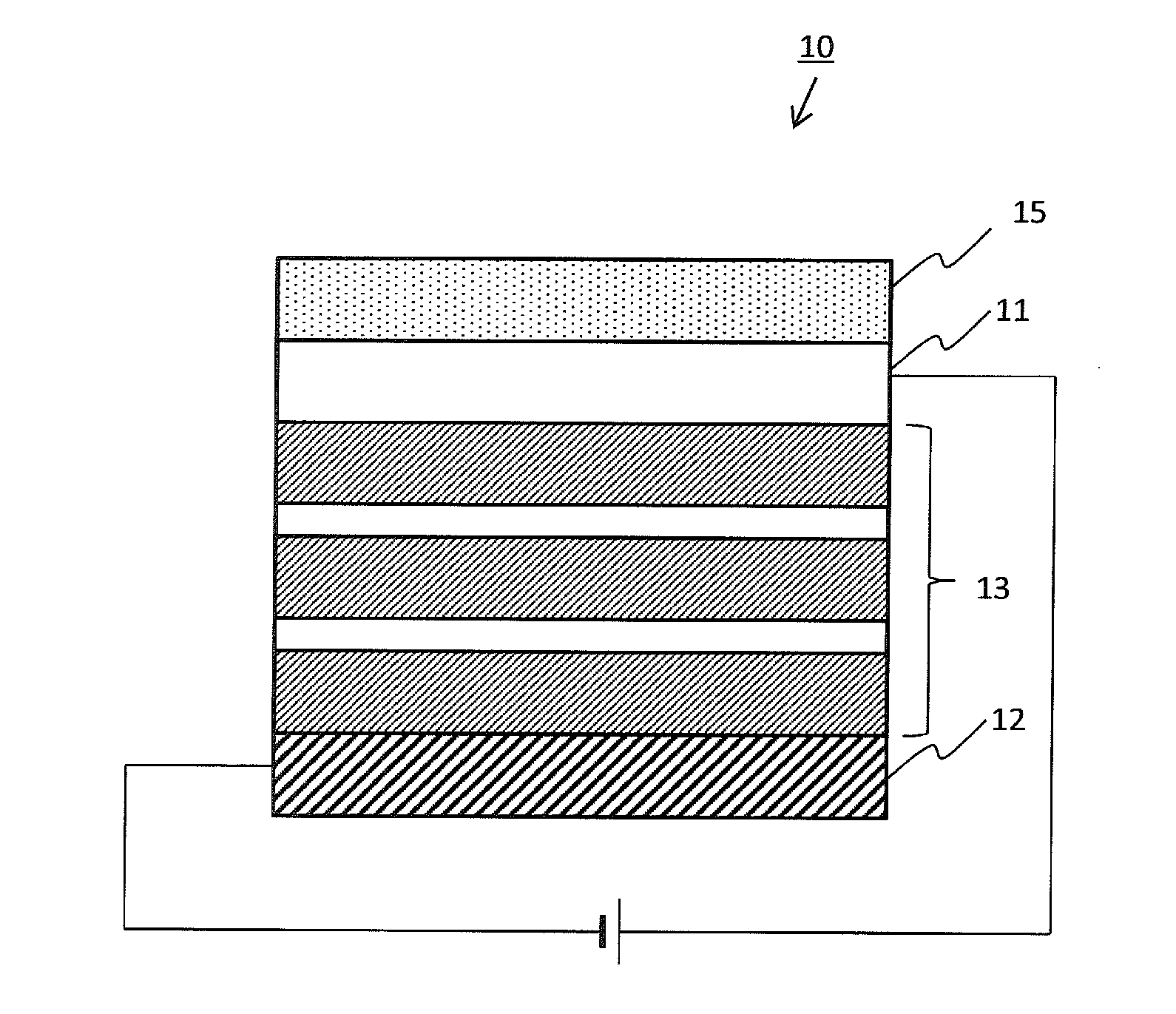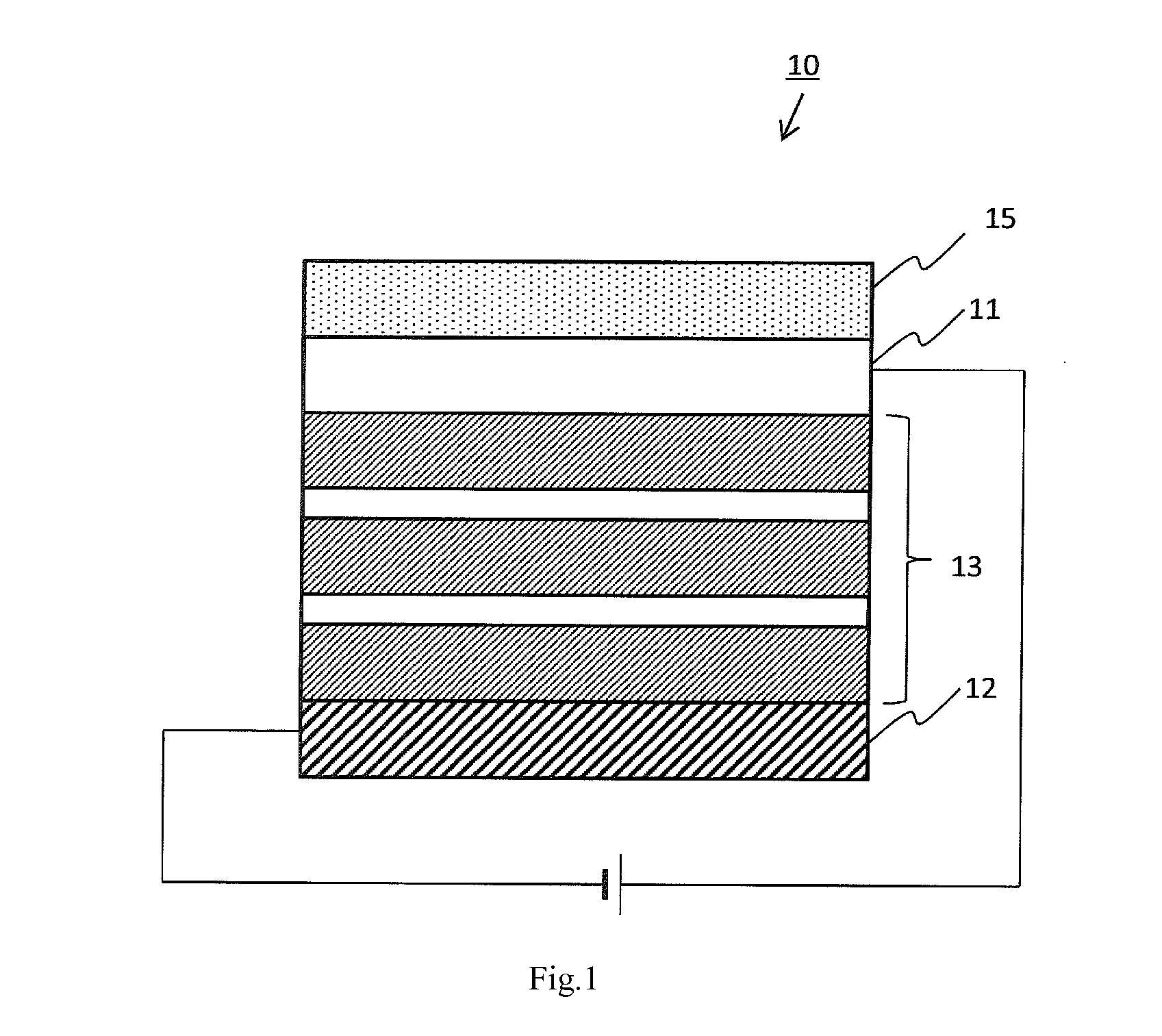Scattering film for organic el, and organic el light-emitting device equipped with same
a light-emitting device and organic el technology, applied in the field of scattering films, can solve the problems of low light utilization efficiency, low field-of-view dependence of organic el light-emitting devices, and mainly lost light, so as to improve light utilization efficiency, reduce field-of-view dependence, and improve the effect of light utilization efficiency
- Summary
- Abstract
- Description
- Claims
- Application Information
AI Technical Summary
Benefits of technology
Problems solved by technology
Method used
Image
Examples
example 1
[0047]After the following constituent components were mixed under agitation into a coating liquid for scattering layer formation, the coating liquid was applied onto a support, i.e., a 100-μm-thick polyethylene terephthalate film (Lumirror T60 available from Toray Industries Inc.) by bar coating. Then the applied liquid was dried to give an 8-μm-thick scattering layer, i.e., a scattering film according to Example 1.
Formation Used In Example 1>Acrylic Polyol15.47 Parts(ACRYDIC A-804 Available from DIC Corporation, SolidContent: 50%, Refractive Index: 1.5)Isocyanate Curing Agent 3.78 Parts(TAKENATE D110N Available from Mitsui ChemicalsInc., Solid Content: 60%)Silicone Resin Particles 16.8 Parts(KMP-701 Available from Shin-Etsu Chemical Co., Ltd)(Average Particle Diameter: 3.5 μm, Refractive Index: 1.45)Zirconium Oxide 1.5 Parts(Average Particle Diameter: 0.5 μm, Refractive Index: 2.4)Diluting Solvent33.84 Parts
example 2
[0048]A scattering film according to Example 2 was obtained in the same manner as Example 1 except that the content of the zirconium oxide in the coating liquid for scattering layer formation used in Example 1 was changed to 3 parts by weight.
example 3
[0049]A scattering film according to Example 3 was obtained in the same manner as Example 1 except that the content of the zirconium oxide in the coating liquid for scattering layer formation used in Example 1 was changed to 6 parts by weight.
PUM
 Login to View More
Login to View More Abstract
Description
Claims
Application Information
 Login to View More
Login to View More - R&D
- Intellectual Property
- Life Sciences
- Materials
- Tech Scout
- Unparalleled Data Quality
- Higher Quality Content
- 60% Fewer Hallucinations
Browse by: Latest US Patents, China's latest patents, Technical Efficacy Thesaurus, Application Domain, Technology Topic, Popular Technical Reports.
© 2025 PatSnap. All rights reserved.Legal|Privacy policy|Modern Slavery Act Transparency Statement|Sitemap|About US| Contact US: help@patsnap.com


